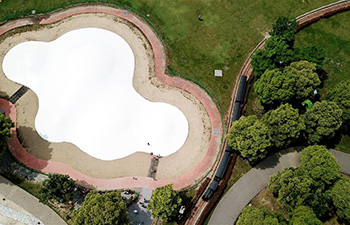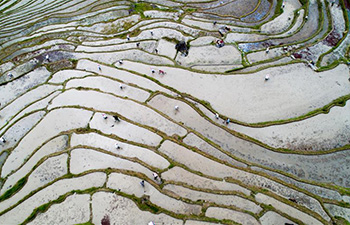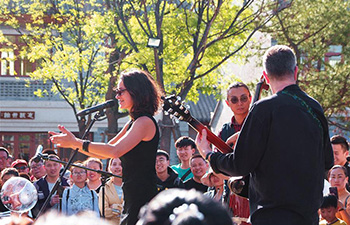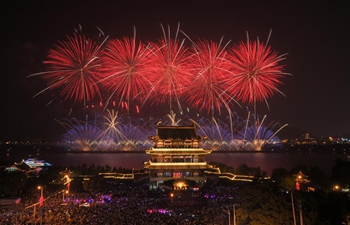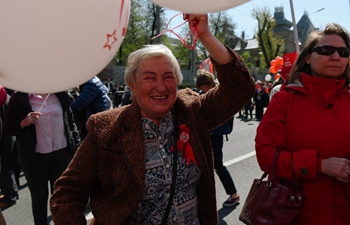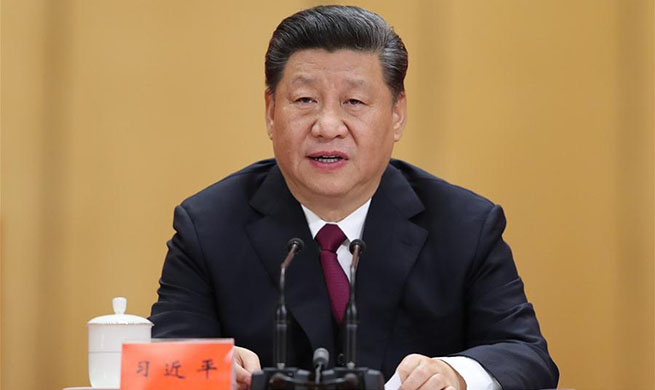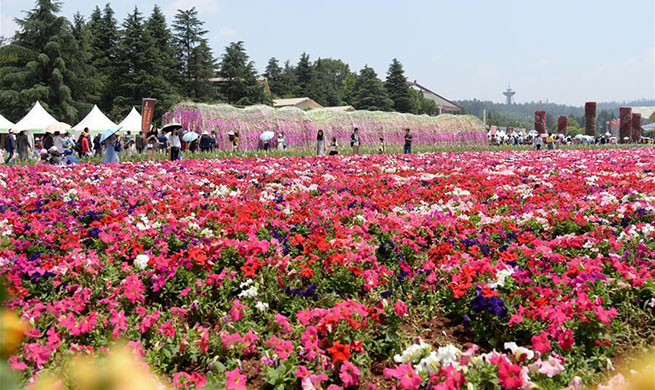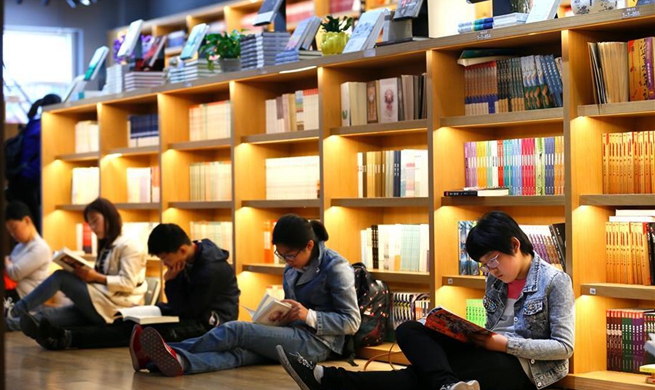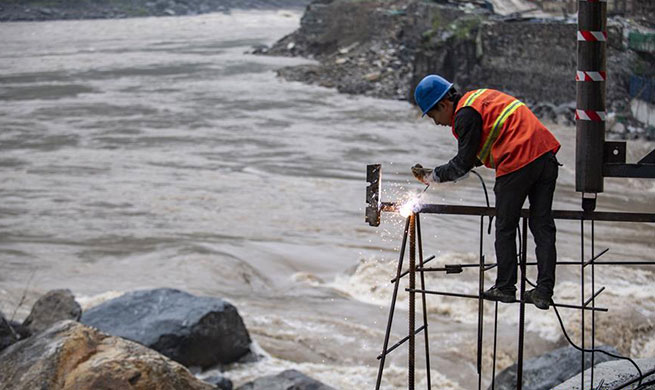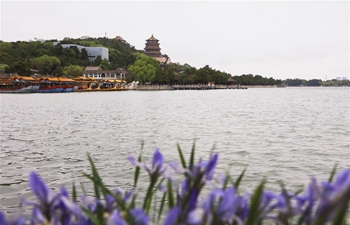ROME, May 2 (Xinhua) -- Italy on Thursday marked the 500th anniversary of the death of Renaissance genius Leonardo da Vinci, kicking off what authorities are calling "the year of Leonardo" that will end on April 15, the anniversary of the master's birth.
Born in 1452 near the Tuscan village of Vinci (hence his designation as "da Vinci", which means "from Vinci"), Leonardo went on to become a prolific painter, anatomist, architect, scientist, engineer, set designer, and inventor, embodying the quintessential Renaissance man with his interdisciplinary approach to art and science.
"The year of Leonardo begins today," Education Minister Marco Bussetti said at the inauguration of an event called "Futura Leonardo" at Rome's Castel Sant'Angelo, a castle overlooking the Tiber River running through Rome that was built around the 123 A.D. mausoleum of the ancient Roman Emperor Hadrian and his family.
"Few individuals, like Leonardo, have had the strength and the capacity to create the future," the minister told a gathering of students and officials.
"His ideas, the development of his machines, his use of drawing and perspective, his engineering projects, laid the bases for scientific, industrial, and technological discoveries in the centuries that followed."
Leonardo, said Bussetti, was "a great protagonist of Humanism" and "the eclecticism and heterogeneity of his intellectual and artistic activity make him a perfect figure symbolizing the ways in which knowledge today must be understood."
The minister also reminded participants that Italians are Leonardo's heirs: "our roots derive from him, which is why it is our civic duty to know our past, to safeguard and appreciate it, to bring it back to life in the present so that it can stimulate our future."
"We are what we are thanks to what we have been, and we are granted a future only in relation to the tradition that defines us as a civilization," Bussetti said.
Art historian and critic Vittorio Sgarbi commented that "Leonardo is not dead: he is inside every one of us -- a man who knew that our perfection is in the mind. His mind was capable of everything -- he really thought there would be a time when humans would fly."
Leonardo's ideas about flying are on view in "The Wings of Leonardo: Genius and Flight", an exhibition inaugurated by Rome Mayor Virginia Raggi at Fiumicino International Airport.
It includes five life-size reproductions of flying inventions designed by Leonardo, including a flying man with an 11-meter wingspan, a flying ship that takes off from the water, and a fan-powered machine that is an ancestor to the modern-day glider.
Indeed, the Renaissance master who authored what is perhaps the world's most famous painting, the Mona Lisa, has an entire museum dedicated to his scientific thought: the Leonardo da Vinci National Museum of Science and Technology in the northern city of Milan, where Leonardo spent a number of years as court engineer to Duke Ludovico Sforza.
The museum holds the most important historical collection in the world of detailed models based on his drawings: over 130 of them, showing Da Vinci's different fields of interest, from flight to military engineering, from architecture to work machines.
In another tribute to the master on the 500th anniversary of his death, the Italian Foreign Ministry has organized over 150 events around the world, including exhibits, conferences, screenings and theater performances.
"Engineer, painter, scientist, and universal talent, Leonardo left us an infinite body of work to be studied (and) admired," the ministry said in a statement.
The events include an exhibition called "Opera Omnia" (Latin for "Complete Works") that will travel to 14 countries in Africa, Asia, and Europe, and a multi-disciplinary digital show called "Da Vinci Experience", which will be presented in North and South America, the ministry said.
Da Vinci spent his last years at the Chateau du Clos Luce, a small castle near the city of Amboise in the Loire Valley, under the patronage of King Francis I of France.
He died there in 1519 at age 67, and Italian President Sergio Mattarella traveled on Thursday to meet French President Emmanuel Macron at the tomb of the Renaissance genius, where they both laid white flowers in a solemn ceremony.
"We are very grateful to the President of the Italian Republic, Sergio Mattarella, for his visit," French Ambassador Christian Masset said in an interview with RAI public broadcaster in Rome on Thursday.
The French ambassador said that the recent diplomatic crisis between Italy and France -- which came to a head earlier this year when Deputy Prime Minister Luigi Di Maio of the populist Five Star Movement held a controversial meeting with the Yellow Vest protesters in France, prompting Italy's neighbor to recall its ambassador for a brief period -- is over.
"These joint celebrations are a symbol of the closeness that exists between our two countries and our two cultures, because we are two countries of great culture, which have fed one another through the centuries," Masset said.
The French ambassador went on to say that Leonardo joined "science with feeling, rigor with humanity" and his philosophy led to "an idea of progress that is based on respect for nature and for knowledge."
"Leonardo was a model and remains a model for the 21st century," Masset said. "He was open to the world and to others. As Leonardo used to say: the one who listens has more than one brain -- his own, and that of others."
